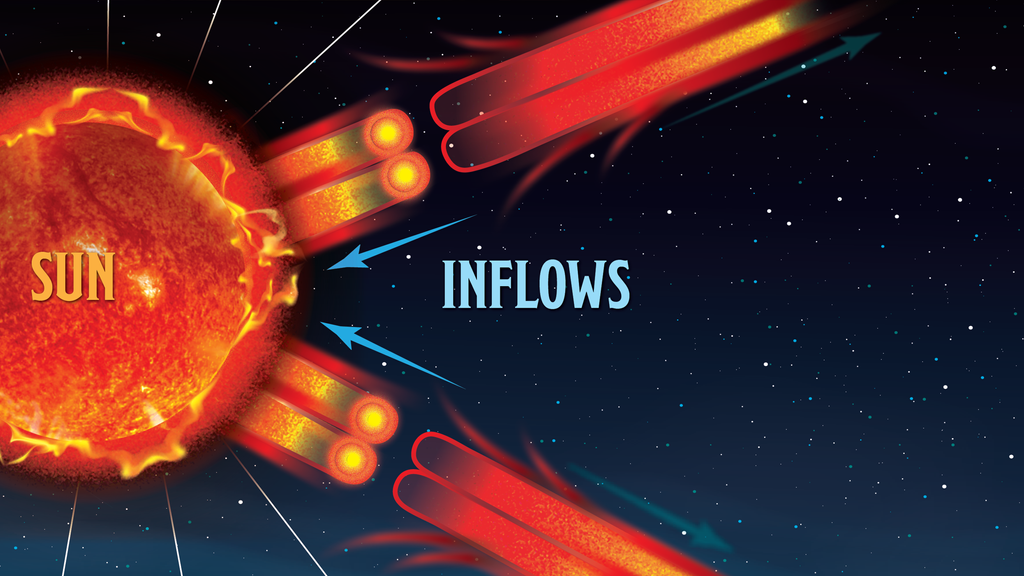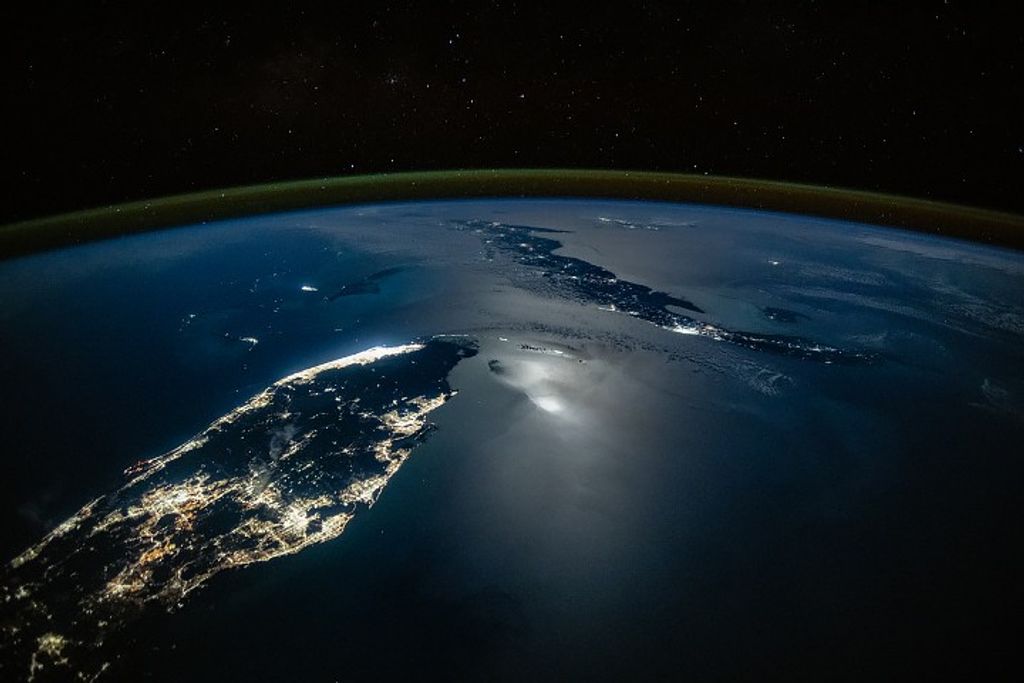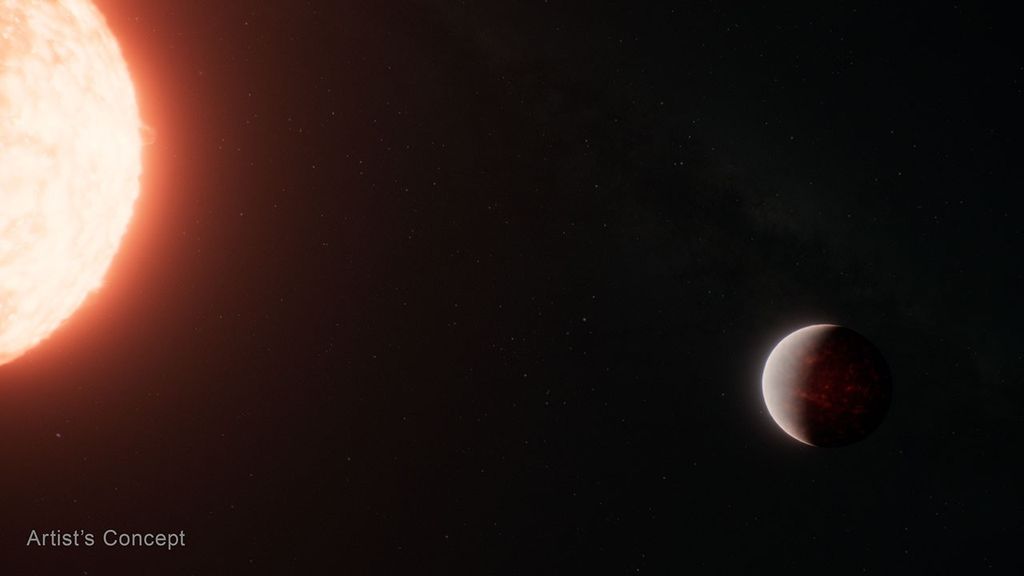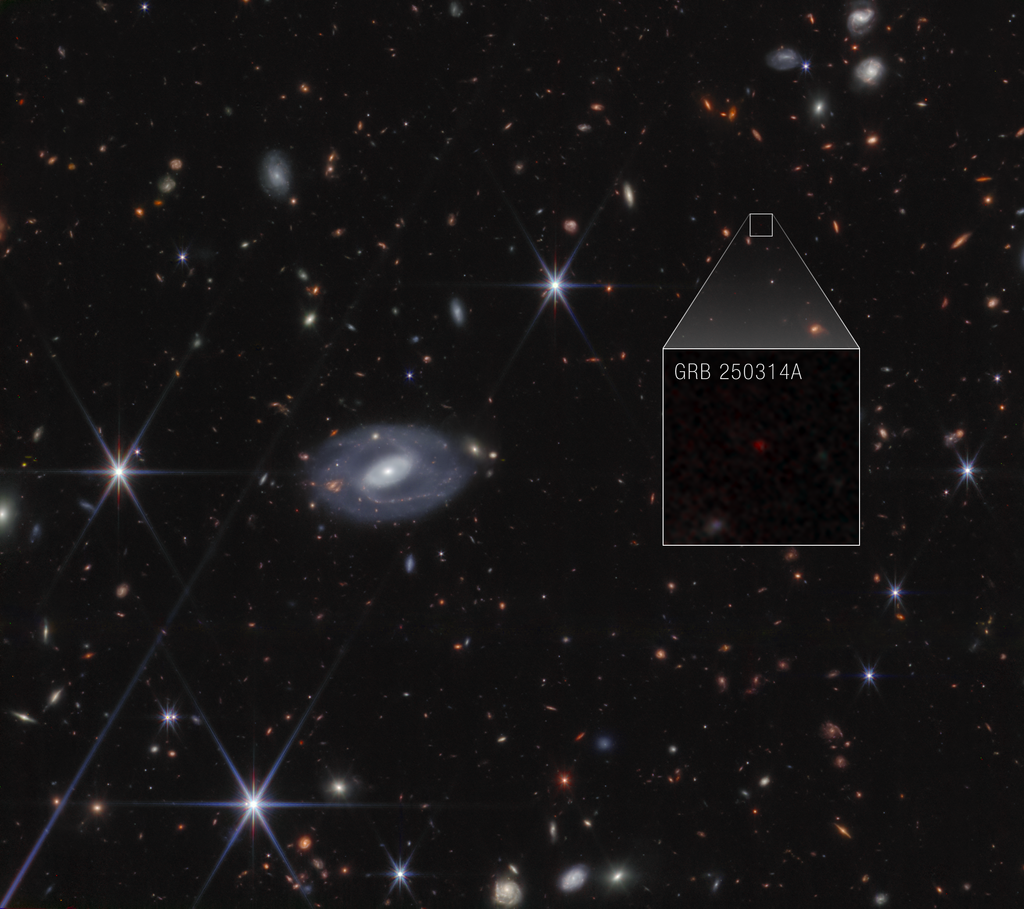1 min read
Exoplanet LHS 475 b (NIRSpec Transit Light Curve)
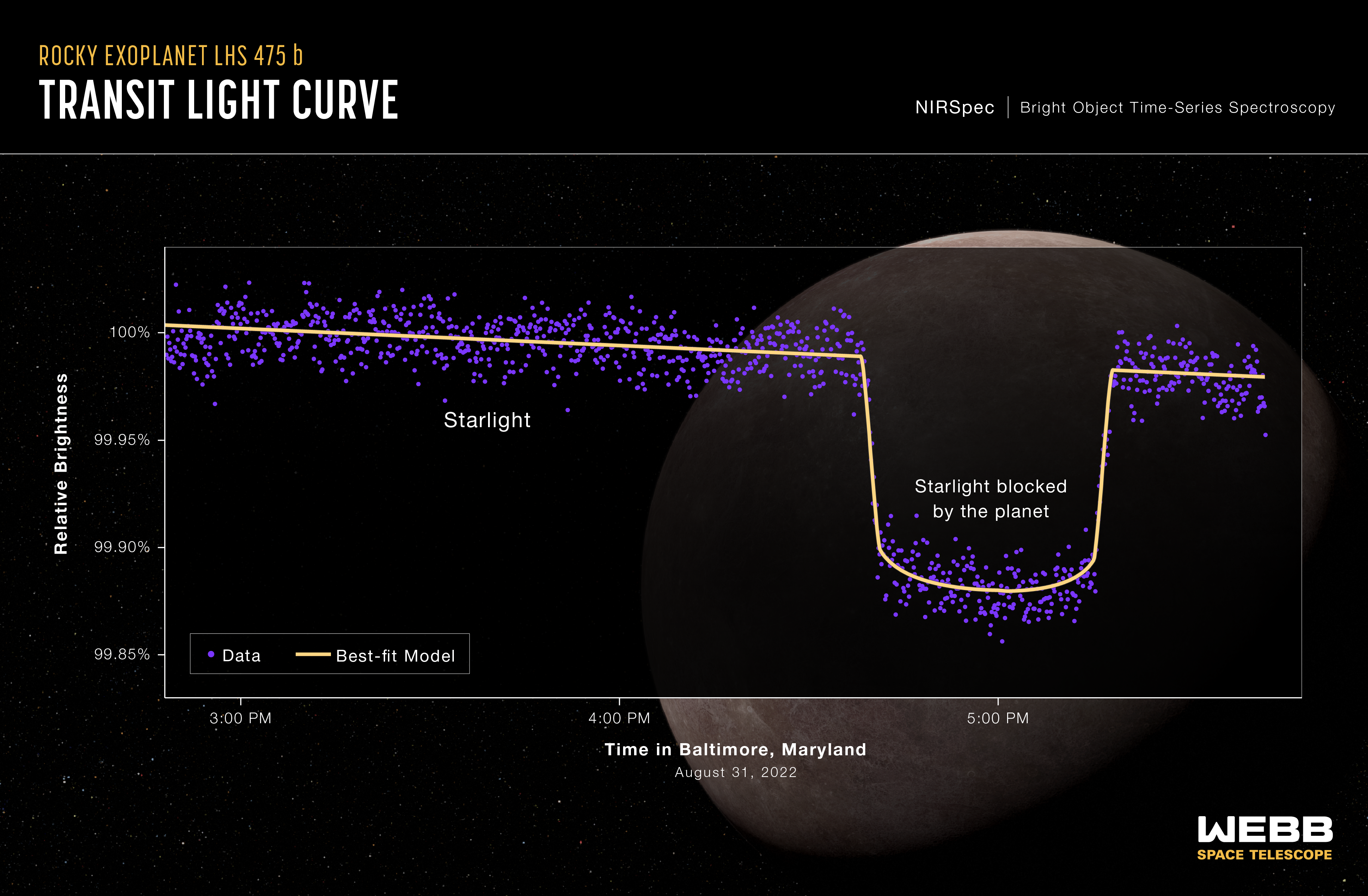
How do researchers spot a distant planet? By observing the changes in light as it orbits its star.
A light curve from NASA’s James Webb Space Telescope’s Near-Infrared Spectrograph (NIRSpec) shows the change in brightness from the LHS 475 star system over time as the planet transited the star on August 31, 2022. This observation was made using NIRSpec’s bright object time-series mode, which uses a grating to spread out light from a single bright object (like the star LHS 475) and measure the brightness of each wavelength of light at set intervals of time. The data show that LHS 475 b is 99% the diameter of Earth and therefore rocky.
To capture these data, Webb stared at the LHS 475 star system for almost 3 hours, beginning about 1.5 hours before the transit and ending about 30 minutes after the transit. The transit itself lasted about 40 minutes. The curve shown here includes a total of 1,158 individual brightness measurements – about one every nine seconds.
LHS 475 b is a rocky, Earth-sized exoplanet that orbits a red dwarf star roughly 41 light-years away in the constellation Octans. The planet is extremely close to its star, completing one orbit in two Earth-days. The planet’s confirmation was made possible by Webb’s data.
The background illustration of LHS 475 b and its star is based on our current understanding of the planet from Webb spectroscopy. Webb has not captured a direct image of the planet or its atmosphere.
NIRSpec was built for the European Space Agency (ESA) by a consortium of European companies led by Airbus Defence and Space (ADS) with NASA’s Goddard Space Flight Center providing its detector and micro-shutter subsystems.
- Release DateJanuary 11, 2023
- Science ReleaseNASA’s Webb Confirms Its First Exoplanet
- CreditIllustration: NASA, ESA, CSA, Leah Hustak (STScI); Science: Kevin Stevenson (APL), Jacob Lustig-Yaeger (APL), Erin May (APL), Guangwei Fu (JHU), Sarah Moran (University of Arizona)
Downloads
Related Images & Videos

Exoplanet LHS 475 b and Its Star (Illustration)
This illustration reflects that exoplanet LHS 475 b is rocky and almost precisely the same size as Earth based on new evidence from NASA’s James Webb Space Telescope. The planet is only a few hundred degrees warmer than our home planet. The planet whips around its star in just...
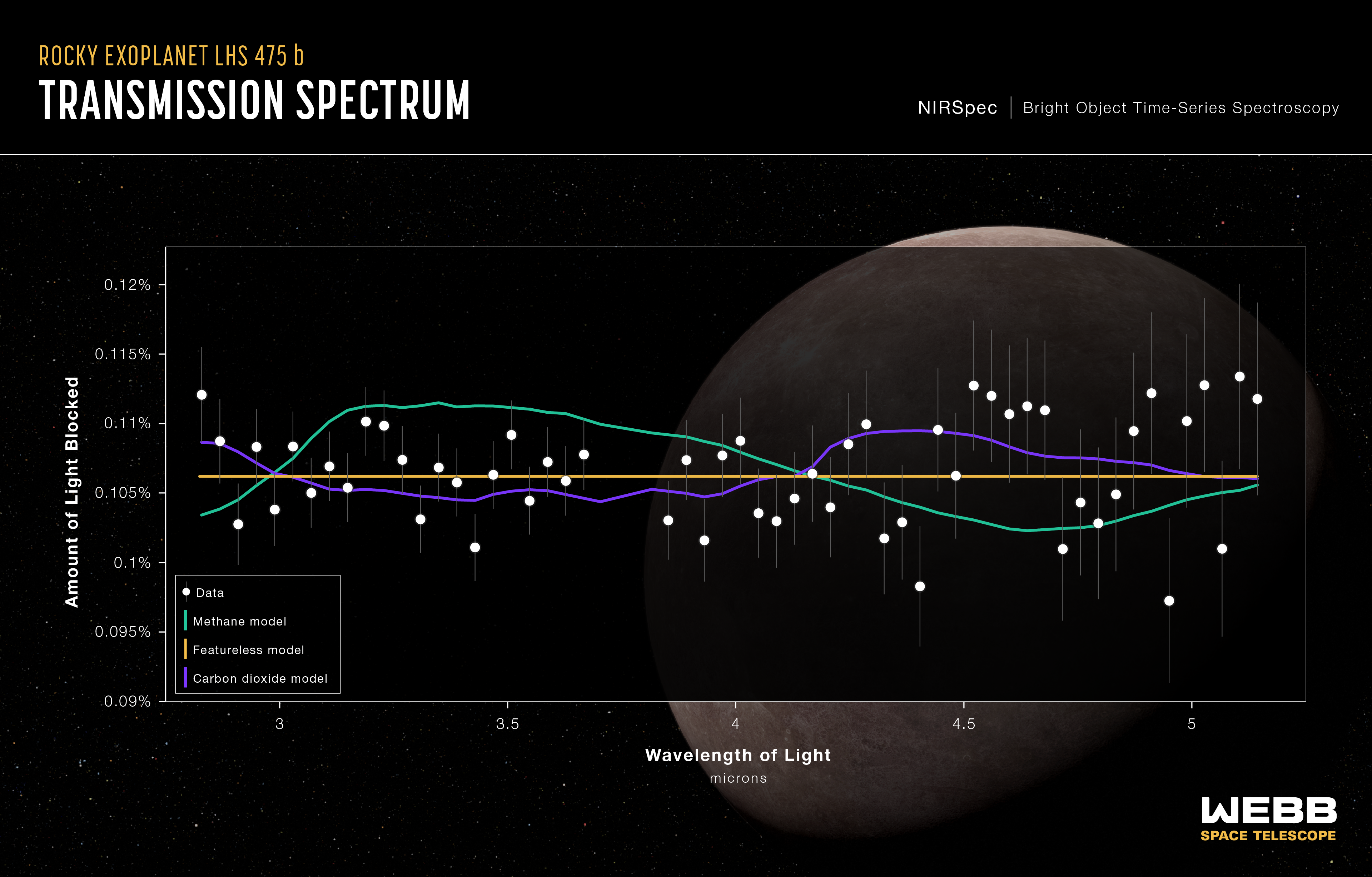
Exoplanet LHS 475 b (Transmission Spectrum)
A flat line in a transmission spectrum, like this one, can be exciting – it can tell us a lot about the planet. Researchers used NASA’s James Webb Space Telescope’s Near-Infrared Spectrograph (NIRSpec) to observe exoplanet LHS 475 b. As this spectrum shows, Webb did not observe...
Share
Details
Laura Betz
NASA’s Goddard Space Flight Center
Greenbelt, Maryland
laura.e.betz@nasa.gov
NASA, ESA, CSA, Leah Hustak (STScI)
Kevin Stevenson (APL), Jacob Lustig-Yaeger (APL), Erin May (APL), Guangwei Fu (JHU), Sarah Moran (University of Arizona)









